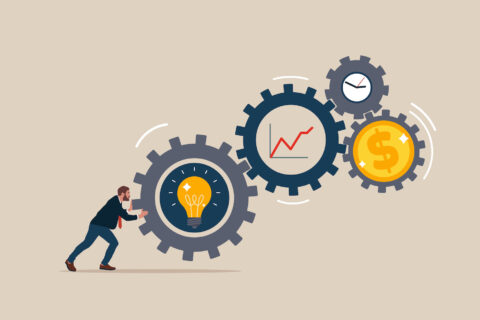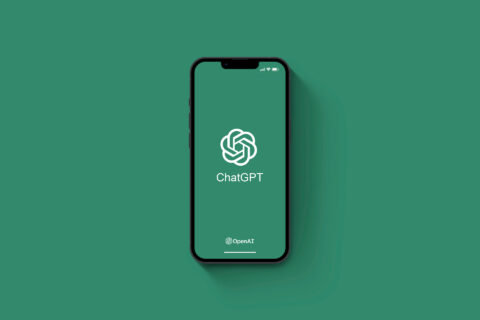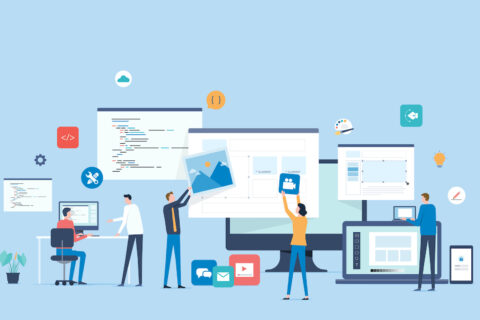
Let’s get one thing straight: working from home does not mean your pursuit of work-life balance is canceled. Work-life balance is more important now than ever as we navigate dividing work and leisure in the same space within our homes.
The problem lies within spending copious amounts of time on our devices—simply moving from computers for work to TVs for leisure. Not only are these developing habits making us feel disconnected from society, but they can also make us feel disconnected from ourselves.
As a result, we’re all on the verge of, or already, feeling tech fatigue. Fatigue is defined as “weariness from bodily or mental exertion.” When we are fatigued, our bodies reach a point of exhaustion from too much exertion (i.e., too much exercise or emotional stress). Tech fatigue, on the other hand, is a result of spending too much time on screens and results in an adverse reaction that affects our physical and mental health.
Fending off tech fatigue
In 2001, columnist John Dvorak coined the term “TFS” (a.k.a. Tech Fatigue Syndrome). TFS is another way of saying, “you’re just getting tired of it.” Technology draws us in because it’s designed to do so.
Instagram’s UI designers knew what they were doing with the infinite scroll (research has shown that the infinite scroll is addictive). Netflix knew what it was doing with autoplay (some people find the feature useful, while others –– not so much).
While many communities are under some form of lockdown (i.e., shelter in place orders), many of us don’t have access to our normal dopamine-based activities like group exercise and social interaction. We turn to technology for connection because it’s easy (and right at our fingertips). So, how can we overcome tech fatigue in a quest to stay connected?
Create mindful routines
While you’re working from home, following a Monday to Friday schedule will help your circadian rhythm (your 24-hour sleep/wake cycle).
Make an effort to wake up at the same time every day and eliminate technology for the first half-hour upon waking. This will allow your body and mind to awaken naturally and increase productivity for the rest of the day.
Start your morning by doing an activity to fill the time slot of your normal commute. Maybe that entails listening to a podcast or reading a book. Then create a flexible office schedule that allows for maximum productivity (which doesn’t have to include sitting at a desk for eight hours). Take mindful and creative breaks away from your screen (e.g., stretching, a brisk walk, or cook a healthy meal).

In the evenings, practice creating boundaries with technology. Log out of your work email client and consider if you have the bandwidth for social connection. If so, reach out to friends and family, skip the Zoom chat, and try a regular phone call instead. Treat yourself to a virtual event occasionally to make a regular evening feel extra special. On the days you don’t feel like connecting, skip it! Head to bed early, but make sure to put your phone out of reach at least an hour before bedtime to allow your body to release melatonin naturally.
Get enough sleep
As we adapt to changing obligations and stay-at-home orders, many of us find ourselves sleeping very little or sleeping too much. Technology impacts sleep quality in many ways and can keep your brain alert—preventing you from getting a restful night’s sleep. According to Sleep.org, one harmful side effect of technology is the blue light emitted from screens that suppress melatonin levels (the hormone our bodies release hours before bedtime).
Locke Hughes, a certified health coach, explains why some of us are sleeping a lot more (or less) right now. “Your body is releasing stress hormones in the same way as if you were doing some sort of strenuous physical activity.”

Our bodies and minds are used to a particular routine. When that routine is thrown off, it throws off our circadian rhythm. Thus, our waking and sleeping habits are not only struggling due to the stressful situation, but we harm our cycle even more by throwing technology into the equation more than usual. The takeaway? Prioritize your sleep routine.
Practice mood-boosting activities
There are plenty of ways to release dopamine without binging on technology. For instance, long walks are a great way for your body to get some Vitamin D and fresh air. If you’re staying indoors, many fitness studios offer online classes, and there are free fitness apps like Peloton and Fitonn –– while using technology, you’re moving mindfully.
Spend time on creative activities, a better return on your investment than scrolling through Instagram. Working on a puzzle each day releases tiny amounts of dopamine as you connect the pieces. As you get closer and closer to completing the bigger picture, adrenaline increases, and your body releases endorphins. Coloring books follow the same principles, as does reading a book or playing an instrument. Any activity that will allow you to reach a level of accomplishment creates a significant dopamine effect on your brain.
Mindful resets
Consistent routines, prioritizing sleep, and creative adrenaline-boosting activities are the trifecta for staying connected and overcoming tech fatigue.
Ultimately, be gentle with yourself. Everybody has a different experience, and it’s not always easy to create this kind of balance in life. There’s nothing wrong with a little scrolling or TV watching—some days that’s the best that we can do. Just know that a mindful reset isn’t limited to your phone.
Liana Pavane is a digital wellness coach and founder of TTYL—a tech-free community dedicated to human connection. Liana founded TTYL in 2018 to help people have a healthier relationship with technology and social media. Since launching, she has been featured on Thrillist, TimeOut, Thrive Global, NY1, The Mind’s Journal, Darling Magazine, and more for her work in digital wellness. As a professional community builder, Liana believes in the power of unplugging and living in the present moment. Her tech-free events have been hosted at prominent spaces such as Athleta, Showfields, The Assemblage, Freehold, The Flower Shop, and Tijuana Picnic. When she’s not hosting TTYL events, Liana is coaching clients on how to put down their phones and pick up their lives. As a born and raised New Yorker, Liana grew up in the city and studied theatre at Ithaca College. In her free time, you can find Liana networking with like-minded people or finding joy away from her phone.
© YFS Magazine. All Rights Reserved. Copying prohibited. All material is protected by U.S. and international copyright laws. Unauthorized reproduction or distribution of this material is prohibited. Sharing of this material under Attribution-NonCommercial-NoDerivatives 4.0 International terms, listed here, is permitted.













